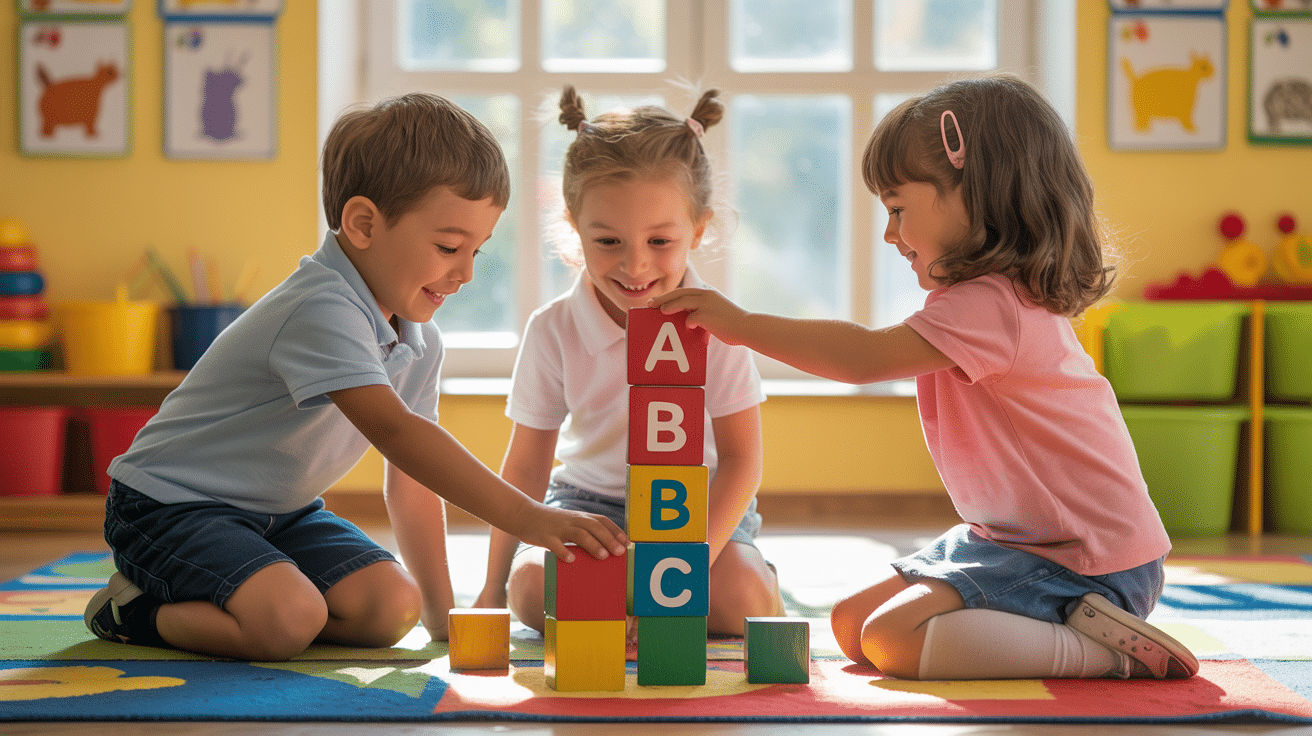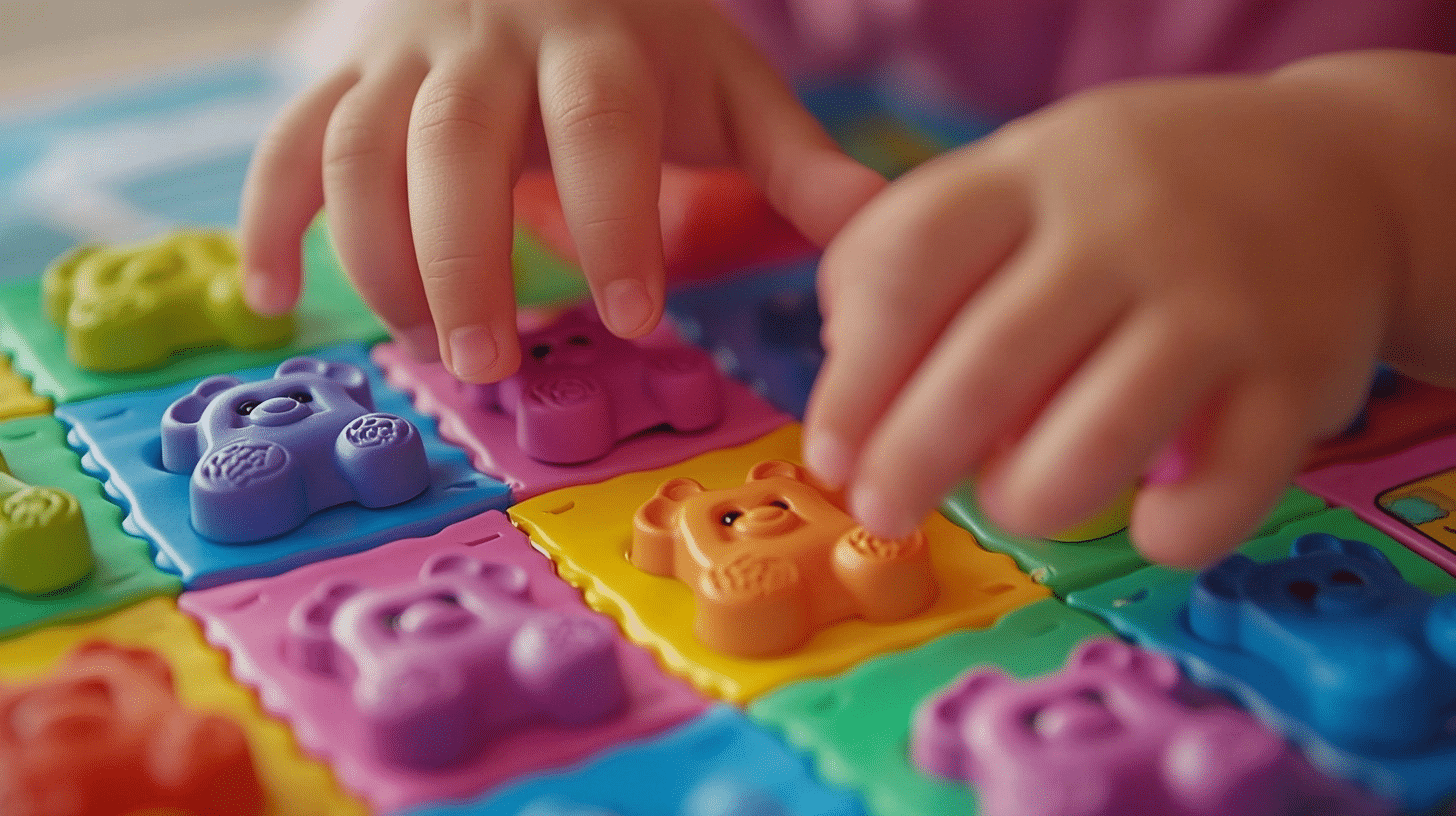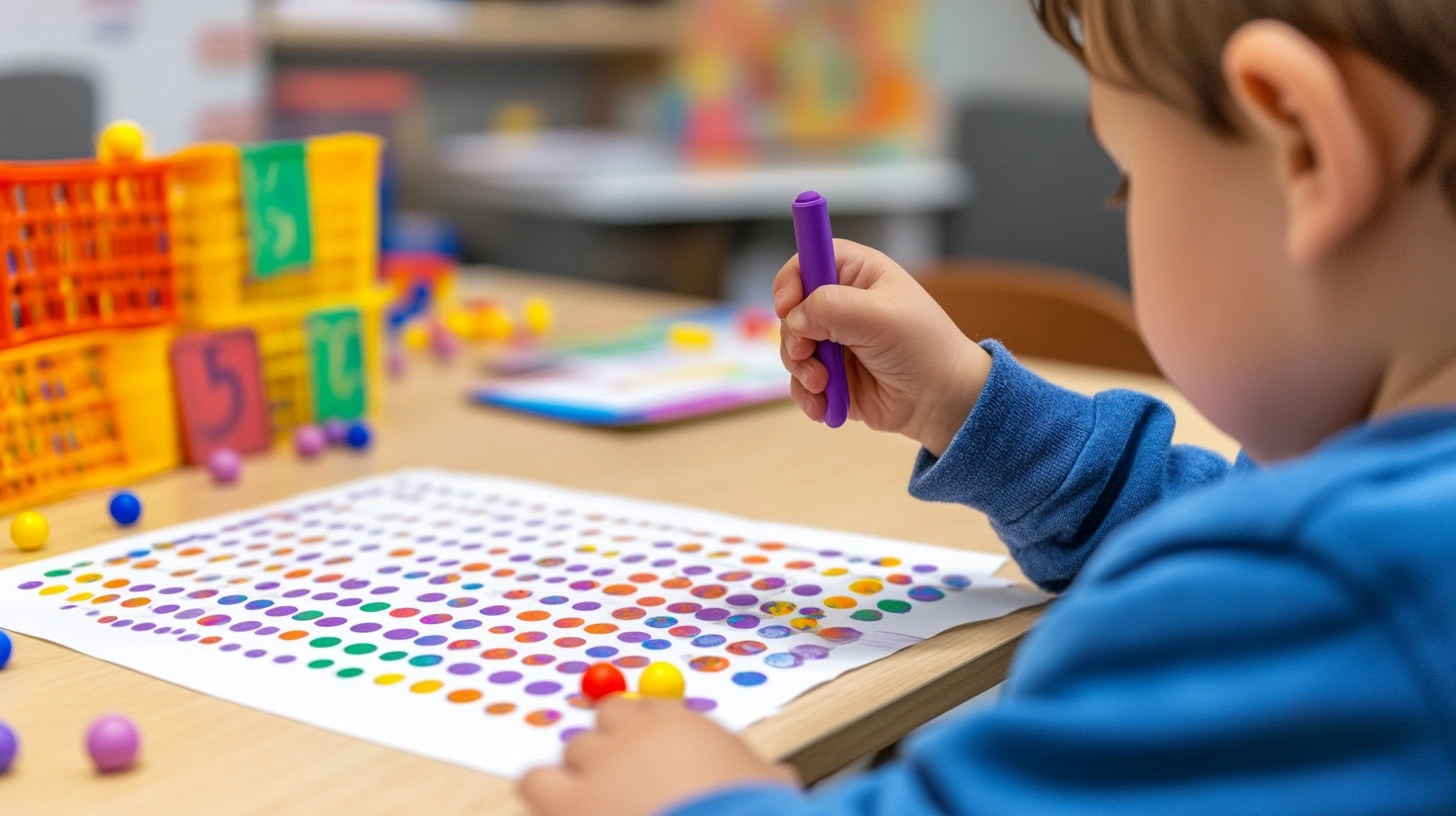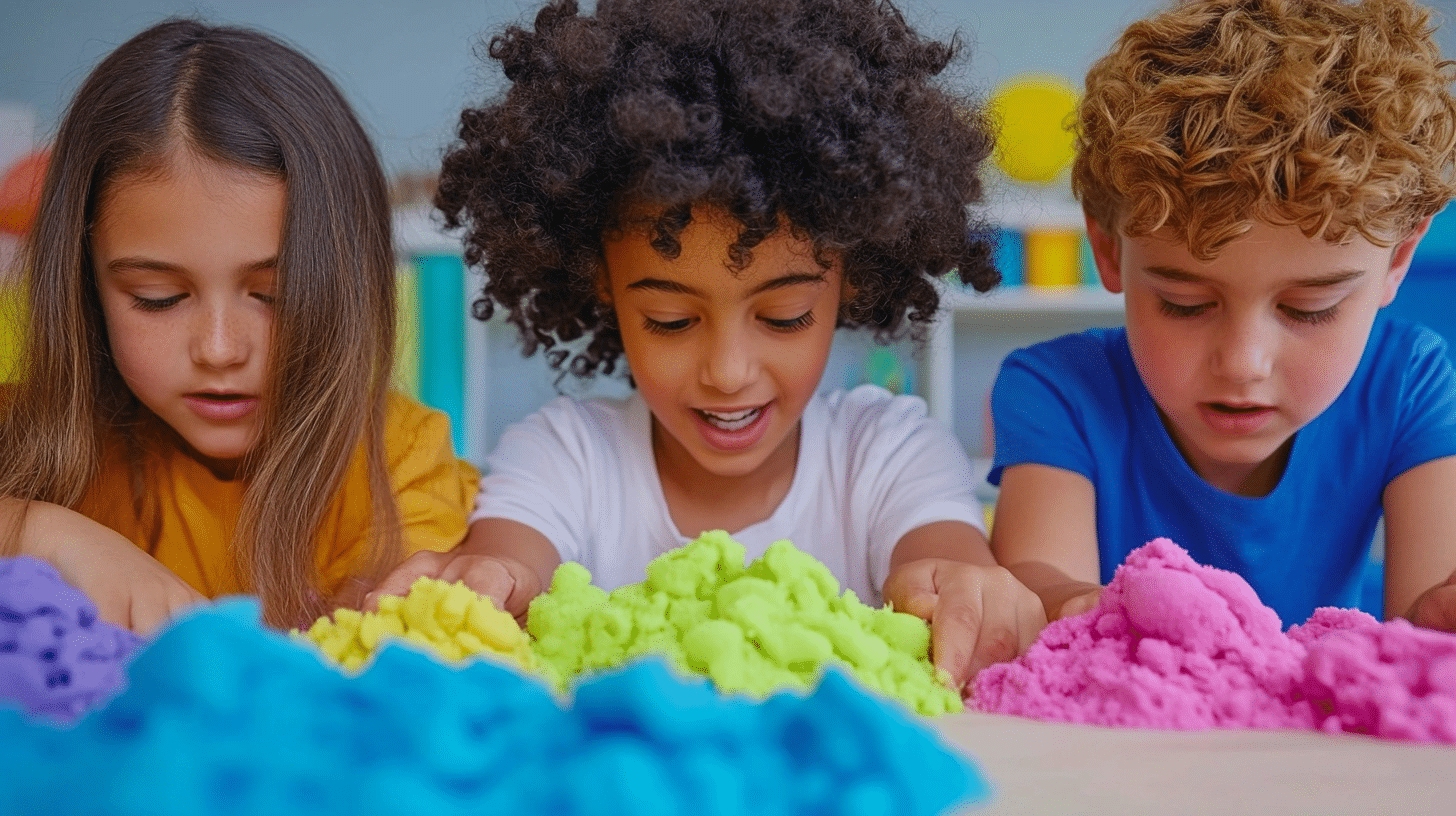Parents and teachers often notice that young children struggle with basic counting skills. Many kindergarteners need extra practice with numbers before they can confidently move forward with math concepts.
Learning to count should be fun, not boring or difficult. This is why engaging counting activities for kindergarten students have become essential tools in early childhood education. Simple counting games can make math an enjoyable experience for kids. These activities help children learn numbers while having fun.
Children who participate in regular counting activities for kindergarten often develop stronger number sense and mathematical foundations.
This blog post shares easy counting games parents and educators can play at home or in classrooms with items they already have.
The Importance of Counting in Kindergarten

Counting activities for kindergarten build essential foundations that support children throughout their academic path. When young students engage with numbers through hands-on play, they develop neural pathways that improve mathematical thinking.
Research indicates that early mastery of counting correlates strongly with later success in mathematics.
Through meaningful counting activities for kindergarten, children learn that numbers aren’t just symbols but represent real quantities in their world.
This understanding applies to everyday situations, such as dividing snacks among friends, helping in the kitchen, or tracking points during playtime. Educators notice that consistent practice with numbers builds mathematical confidence in young learners.
Families can extend this learning by incorporating simple counting activities for kindergarten into home routines.
When counting becomes a joyful experience rather than a chore, children develop a positive relationship with mathematics that continues throughout their education.
Teaching Numbers with Counting Activities for Kindergarten
Young children build math skills through playful counting practice. When kindergarteners touch, move, and sort objects while counting, they grasp number concepts more fully than with paper and pencil alone.
Hands-on counting activities create the base for all future math learning. Below are some fun counting activities for kindergarten kids.
Hands-On Manipulative Activities

1. Ten Frame Counting with Mini Erasers
Children use ten frames and colorful mini erasers to practice counting from 1 to 10. Placing one eraser in each box helps build number sense and one-to-one correspondence. This activity supports visual learners who need to see quantities to understand them. Teachers can increase the challenge by asking “how many more to make 10?”
2. Counting Bears with Ten Frames
Using plastic counting bears and ten frames, kids link numbers with amounts by filling each box with a bear. This method helps children see how numbers work in real life.
The colorful bears make math more fun for young learners.
3. Unifix Cubes Number Towers
Children build towers using Unifix cubes to match specific numbers. A card showing “5” prompts them to connect five cubes.
Kids can compare tower heights side by side, making number differences clear. This hands-on method works well for children who learn through building.
4. Counting with Pom-Poms and Muffin Tins
Provide numbered muffin tins and a container of soft pom-poms. Children count the right number of pom-poms for each numbered section.
This activity improves small finger movements while teaching counting. The familiar kitchen item makes math feel connected to daily life.
5. Clothespin Number Match
Make cards showing dots on one side and numbers on the other. Kids count the dots and clip a clothespin on the matching number. This simple activity builds hand strength that helps with writing later. Children enjoy the clicking sound of the clothespins, which adds sensory interest.
6. Button Sorting by Number
Set out paper plates with numbers written on them and offer a jar of buttons. Children count and sort the correct number of buttons onto each plate.
This budget-friendly activity uses items found at home. The various button colors and sizes add an extra sorting challenge.
7. Playdough Number Mats
Each mat displays a number and empty spots. Children create small playdough balls and press them into the spaces, counting as they go. The squishing motion is calming for many children. This method connects how a number looks, how it sounds when counted, and what amount it represents.
8. Bead String Count
Children string colorful beads onto pipe cleaners to match a given number card. They count aloud while threading each bead.
The finished strings can be bent into shapes or letters for extra learning. This activity helps children who need to move while learning.
9. LEGO Brick Counting Cards
Offer counting cards and LEGO bricks. Kids build stacks with the exact number of bricks shown on each card.
This combines favorite toys with math learning. Children can create patterns with different colored bricks while counting.
10. Dice Rolling Count and Build
Children roll a die and build a tower using that number of blocks. They continue rolling and adding to their structure.
The random numbers from the dice add excitement. This game works well in pairs, with children comparing their growing towers.
11. Counting with Nature Items
Gather leaves, rocks, or pinecones from outside. Children sort and count these items into groups.
This connects outdoor time with math learning. Seasonal items can make this activity fresh throughout the school year.
12. Egg Carton Counting
Label egg carton cups with numbers. Children place the matching number of small items into each section.
The divided spaces help keep counting organized. This uses recycled materials, making it cost-effective for classrooms.
13. Sticker Counting Charts
Give children number charts and sticker sheets. They place the correct number of stickers next to each number.
Kids love the sticky feeling and bright colors of stickers. The completed charts make great take-home items to show parents.
14. Counting with Snap Cubes
Children connect snap cubes to create a row matching a given number. The clicking sound provides feedback as they count.
This activity allows children to break apart and rebuild numbers, showing how numbers can be split and combined.
15. Number Matching Puzzles
Create simple puzzles where one piece has a number and the matching piece shows that many dots. Children find the pairs that go together.
This self-checking activity builds independence. The puzzle format makes number practice feel like a game rather than work.
16. Counting with Measuring Cups
Mark measuring cups with numbers and provide small counting objects. Children fill each cup with the matching amount of items.
This introduces early volume concepts alongside counting. The connection to cooking makes math feel useful and practical.
17. Magnetic Number Fishing
Make a fishing game with numbered paper fish and a magnet on a string. Children “catch” a fish and count out that many objects.
The game element makes counting practice more fun. This works well as a small group activity during math centers.
18. Counting with Building Blocks
Children create structures using an exact number of wooden or plastic blocks.
They can build towers, walls, or shapes while counting. This activity combines math with construction play that many children already enjoy.
19. Number Line Clothespin Activity
Hang a number line and give children numbered clothespins. They clip each pin to its matching spot on the line.
This helps children see how numbers increase in order. The clothespins strengthen small hand muscles needed for writing.
20. Counting with Ice Cube Trays
Number each section of an ice cube tray. Children place the correct number of small objects in each compartment.
The defined spaces keep counting organized. This common kitchen item makes an excellent low-cost math tool.
21. Counting with Puzzle Pieces
Provide puzzles where each piece has a number. Children place the correct number of small items on each piece before adding it to the puzzle.
This combines counting practice with the satisfaction of completing a puzzle. The visual and spatial aspects appeal to many learning styles.
22. Number Sorting with Cups
Label cups with numbers and offer a mix of items. Children sort the objects into the correct cups, counting as they go.
This method uses movement to reinforce counting. Clear cups allow teachers to quickly check for accuracy.
23. Counting with Dominoes
Use dominoes for counting the dots on each side. Children match dominoes with the same total number of dots.
This naturally leads to early addition concepts. The black and white contrast makes counting clear and error-free.
24. Counting with Lacing Beads
Provide number cards and colorful lacing beads. Children thread the exact number of beads onto laces to match each card.
This improves hand-eye coordination while teaching counting. The finished strings can become bracelets that children proudly wear home.
25. Counting with an Abacus
Show children how to use an abacus by sliding the correct number of beads.
This ancient counting tool gives tactile feedback. It also builds early understanding of place value as children work with different rows.
Worksheet-Based Activities

26. Dot Marker Number Pages
These worksheets show bubble numbers and dotted shapes. Children use dot markers to fill each circle while counting aloud.
The stamping motion makes this more engaging than typical worksheets. The bright colors help visual learners remember number quantities.
27. Count and Color Worksheets
Children count groups of themed pictures, like apples or stars, then color them according to the number shown.
This turns basic counting into a creative activity. The coloring aspect makes math feel more like art time for reluctant learners.
28. Trace and Count Sheets
These sheets ask kids to trace a number, then count and color objects that match that amount. For example, after tracing “7,” they color seven flowers.
This connects number writing with counting. The step-by-step format helps children who need clear structure.
29. Missing Number Fill-Ins
These worksheets include sequences like 1, 2, __, 4, where children complete the pattern.
They can work forward or backward through number sequences. This builds number order understanding and early pattern recognition.
30. Cut and Paste Counting Practice
Children receive pictures to cut out and paste onto counting mats. If a mat shows “5,” they paste five stars.
This combines counting with scissor skills. The physical act of moving items helps concepts stick in memory.
31. Tally Mark Matching Sheets
These pages show tally marks on one side and numbers or picture groups on the other. Kids connect the matching pairs.
This introduces different ways to show numbers. Tally marks prepare children for future data collection activities.
32. Count the Room Printables
Place pictures around the classroom and give children clipboards with worksheets. They walk around, find the items, and record how many they see.
This adds movement to counting practice. The treasure hunt format makes math feel like a game rather than work.
33. Spin and Count Game Sheets
These pages use a paper spinner that children flick to land on a number. They then count and color that many items on their sheet.
The random element makes each turn different. This game-like format keeps interest high during math time.
34. Count and Graph Activities
Children count how many of each picture type appears on the worksheet and fill in a graph accordingly.
This introduces early data skills. The visual bars help children compare quantities at a glance.
35. Number Maze Worksheets
Kids follow a path of specific numbers through a maze, coloring only the correct numbers to find their way out.
This combines number recognition with problem-solving. The maze format makes math practice feel like a puzzle challenge.
36. Color by Number Sheets
These pages hide a picture under number codes. Each number has a matching color; kids color the sections accordingly.
As they reveal the image, they practice number recognition. The surprise picture provides motivation to complete the task.
37. Number Tracing Worksheets
Provide dotted-line numbers for children to trace. They say each number aloud while following the lines.
This builds muscle memory for number writing. The verbal component reinforces the connection between written symbols and spoken words.
38. Counting Cutouts
Print sheets where children count items, cut them out, and glue them under the correct number.
This hands-on approach works well for active learners. The cutting and gluing adds fine motor practice to math time.
39. Match the Number to the Group
These worksheets show numbers alongside groups of pictures. Children draw lines connecting each number with its matching quantity.
This reinforces the link between symbols and amounts. The worksheet format makes this suitable for independent work time.
Creative and Sensory Activities

40. Finger Painting Numbers
Children create number shapes with finger paints and make fingerprint dots to match each number. The messy, tactile nature makes this highly engaging.
The art connection appeals to creative learners. The finished paintings make colorful classroom displays.
41. Counting with Kinetic Sand
Kids search for number tiles hidden in kinetic sand. Once they find a number, they count out that many small toys or shells.
The sand provides calming sensory input while learning. This works well as a quiet corner activity for children who need sensory breaks.
42. Sticker Art Counting
Give children sticker sheets and number mats. They place the correct number of stickers next to each number.
The peeling and sticking actions build fine motor skills. Children can create patterns with their stickers while counting.
43. Water Bead Counting Bowls
Fill containers with water beads and provide numbered cups. Children scoop and count the right number of beads into each cup.
The unique texture of water beads makes this extra appealing. This offers sensory play while practicing counting skills.
44. Pipe Cleaner Number Sculptures
Children bend pipe cleaners to form number shapes, then slide on that many beads to match.
This creates a physical model of each number. The finished pieces can stand up for display or be hung as classroom decorations.
45. Chalk Number Art Outside
Draw large numbers with chalk on a playground. Children walk or hop along the number shape, then place that many objects beside it.
The full-body movement helps active learners. Outdoor math makes learning feel like play rather than work.
46. Bubble Wrap Count and Pop
Write numbers on bubble wrap sheets. Children count and pop the correct number of bubbles for each one.
The satisfying popping sound and feeling makes counting fun. This activity works for both individual and group settings.
47. Nature Counting Collage
During an outdoor walk, children gather natural items to create a counting collage. They glue the correct number of items under each numeral.
This connects math with nature study. The variety of natural textures adds sensory interest to counting practice.
48. Q-tip Dot Counting
Provide paper with numbers and Q-tips with paint. Children make dot patterns to match each number.
The dotting technique improves hand control. This quiet activity works well during center time or as a calm-down activity.
49. Counting Songs with Props
Use finger puppets or felt board visuals with counting songs like “Five Little Ducks” or “Ten in the Bed.” Kids act out each line while removing or adding items as the story progresses. This method connects numbers with music and movement, making counting stick in children’s memories.
50. Sensory Bag Counting Game
Fill a ziplock bag with hair gel and hidden number buttons or beads. Children squish the bag to locate numbers and then press them as they count. This mess-free activity appeals to sensory learners and promotes calm focus. The squishy texture creates a soothing effect while children practice their numbers. For extra challenge, add glitter or small colorful beads to the gel. This activity works well in small groups or as an independent station during center time.
51. Pasta Necklace Counting
Offer dry pasta pieces and string, along with number cards. Children count and thread the correct number of pasta pieces to match the number card, then wear their creation!
This simple activity builds hand strength, counting skills, and math confidence all at once. The pasta can be dyed with food coloring beforehand for extra visual appeal. Children love wearing their math work home, which creates opportunities for parents to review counting at home. This activity costs almost nothing but delivers big learning results.
52. Counting with Stamps and Ink Pads
Let children use rubber stamps to create picture sets that match a number card. For example, they stamp five apples under the number 5.
This activity engages children who learn through physical movement. The slight mess factor actually increases engagement for many children. Teachers can prepare number mats with space below each number for stamping. The finished sheets make great take-home items to show parents what children are learning. Try seasonal stamps to keep the activity fresh throughout the school year.
53. Number Collage Craft
Have kids cut pictures from magazines to match a number. If the number is “4,” they paste four dog images.
This combines literacy skills with math and creativity for a well-rounded learning experience. The activity teaches children to look carefully at images and sort them into categories before counting.
54. Sensory Bin Number Hunt
Fill a bin with rice, beans, or shredded paper and hide number cards and small objects inside. Kids dig through the materials and match each number to the right quantity of hidden treasures.
The hunt aspect makes this counting practice feel like a game. Children love the sense of findy when they find items in the bin. This activity works well as a center that two children can use together, promoting social skills alongside math practice. Change the filler material monthly to maintain interest.
55. Pom-Pom Suction Count
Using a child-safe suction tool or tweezers, kids move colorful pom-poms onto number mats. They count as they go, building fine motor skills alongside math fluency.
This slow-paced activity helps children who need to develop focus. The tools make it extra appealing to children who might otherwise avoid counting practice. Small hands gain strength through this precision work. Consider using different sizes of pom-poms to add a sorting element to the counting task.
56. Counting Ice Cube Painting
Freeze colored water in ice cube trays, then let children paint number templates with the melting cubes. They count aloud each stroke or paint mark they make on the paper.
The cold sensation and changing state of the ice adds scientific learning to this math activity. As the ice melts, children observe cause and effect while practicing their counting. This works best outside or at tables with trays to catch drips. The result is a beautiful watercolor effect that makes math feel like art time.
57. Toy Wash Counting Station
Set up a water bin with toy animals or cars labeled with numbers. Kids count and scrub the matching number of toys at a time.
This practical activity combines water play, cleaning skills, and number practice. Children learn that math connects to real-world tasks. The water element makes this counting practice extra appealing during hot weather. Teachers can extend the learning by having children sort clean toys by color or size after counting.
58. Yarn Wrap Number Boards
Provide number-shaped boards or cutouts and colorful yarn pieces. Kids wrap the yarn around each number the same number of times as the number shows.
For instance, they wrap 6 times for the number 6. This quiet, focused activity builds tactile memory of number shapes. The wrapping motion helps children who need to move while learning. The finished numbers make an attractive classroom display that reinforces learning visually.
59. Sponge Count Painting
Cut sponges into simple shapes and write numbers on cards. Kids dip the sponges in paint and stamp the matching number of times on paper.
This activity helps children internalize one-to-one correspondence through a hands-on method. The sensory feedback from the sponge and paint makes counting more meaningful.
60. Popcorn Counting Cups
Label cups with numbers and provide a bowl of popped popcorn. Kids count and place the correct amount in each cup.
As a bonus, they can eat a few pieces as a reward! This combines snack time with math practice – a winning combination for young learners. The activity brings food preparation and math together naturally. For children with food allergies, substitute small blocks or cotton balls for the popcorn.
61. Felt Number Puzzle Match
Create felt numbers and matching dot sets on separate pieces. Kids place each number over the correct number of dots.
This soft, quiet activity works well for Montessori-inspired classrooms or calm learning corners. The tactile nature of felt appeals to children who learn through touch. This self-checking activity builds independence as children can see if they’ve matched correctly. Store the sets in ziplock bags for easy access during math centers.
62. Glitter Glue Number Writing
Give kids bottles of glitter glue to trace numbers and add matching glitter dots beside them. They count out loud while decorating.
This sparkly activity builds writing skills and makes counting feel special. The slow-drying glue encourages careful work and patience. The finished products catch light and attract attention when displayed. This works well as a small group activity with adult supervision for younger children.
63. Counting Story Craft
Have kids draw or collage scenes like a farm or beach, and include a specific number of objects in their picture. They then count and label the items.
This integrates storytelling, art, and math into one creative task. Children can describe their pictures to classmates, counting the objects as part of their story.
Wrapping It Up
Counting activities for kindergarten set children up for future math success. By using these hands-on games and sensory methods, young learners build number sense naturally through play.
The key question is: What will you try first with your little ones?
Remember that effective counting activities for kindergarten should be fun, not frustrating. When children enjoy math, they develop positive attitudes that last for years.
Try starting with one simple activity from this list, then add more as your child’s confidence grows.
Ready to bring numbers to life? These counting activities for kindergarten only require simple materials you likely have at home. Take that first step today, your child’s math path begins with counting!




